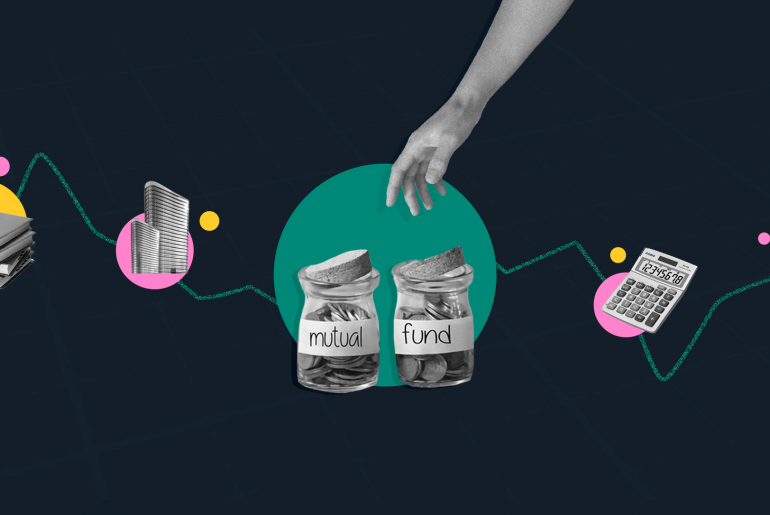Last Updated on Dec 30, 2022 by Aradhana Gotur
When a company issues shares to raise funds, various types of investors invest in them. They can be promoters, institutions, retail investors, and so on. Therefore, it becomes important to assess the shareholding pattern and how much stake each category has to assess the company’s capital structure to make investment decisions.
Let’s understand what is the shareholding pattern, where and how to find it.
Table of Contents
What is the shareholding pattern?
A shareholding pattern is an official document that details a company’s ownership pattern, comprising both promoters and non-promoters. It mentions the percentage of shareholding by the different investor classes. All listed Indian companies are mandated to disclose their shareholding pattern to stock exchanges.
The shareholding pattern can also be described as a company’s capital structure, where the capital is divided into various categories like promoter group shareholding, institutional shareholding, government holding, NRI holding, individual shareholding, and so on.
Components of the shareholding pattern
The shareholding pattern of a company is divided into the following components:
- Promoter and promoter group shareholding
- Public shareholding
- Non-public and non-promoter group shareholding
1. Promoter and promoter shareholding
Promoter shareholding is the percentage of shares owned by the promoters of a company. The promoters are the founders of the company who hold a majority stake in the capital. They also participate in the company’s Board of Directors and are responsible for making key managerial decisions.
How to find the promoter shareholding of NSE stocks on Tickertape?
You can find the promoter shareholding of NSE companies in no time on Tickertape. Follow these steps:
- Launch Tickertape Stock Screener
- Click on Add Filter
- Search for Promoter Holding and tick the box
2. Public shareholding
Shares not held by promoters but by retail and institutional investors fall under this category. Public shareholders can be:
- Mutual funds
- Banks or financial institutions
- Insurance companies
- Foreign Institutional Investors or FII
- Foreign Direct Investors or FDI
- Retail investors/common public
So, if you buy shares of a company, you fall under the public shareholding category.
SEBI rules for shareholding pattern
The Securities and Exchange Board of India (SEBI) has listed various rules regarding the shareholding pattern of listed companies. Besides issuing a statement containing the shareholding pattern every quarter, the following conditions are to be fulfilled by companies:
- If any individual or entity holds over 1% stake in the company, the details of such an investor should be disclosed by the company. The disclosure should be done in the last 21 days of every quarter
- Besides promoter and public shareholding, a company can have a non-public or non-promoter shareholding
- The disclosure of the shareholding pattern should be made to the stock exchange on which the company is listed
- If the promoters pledge their shares to raise funds, the shareholding pattern should disclose the details of such pledging by the promoters and the proportion of shares pledged as collateral
How to check the shareholding pattern of a company?
Since the shareholding pattern is publicly available, you can easily check the details of any company. There are three ways of checking the shareholding pattern as follows:
- Visit the company’s official website or annual reports
- Visit the stock exchange’s website on which the company is listed
- Visit the official website of the Ministry of Corporate Affairs. This website, however, might charge a nominal fee to allow you to access the details
How to find the promoter shareholding on Tickertape?
- Launch your desired Stock Page. Let’s take the example of LIC
- Go to the Holdings tab
Understanding the shareholding pattern – the thumb rules
- A high promoter shareholding is favourable
If the promoters hold a considerable portion of the stock of a company, it is a good sign. It shows that the promoters are taking the biggest risks in investing in the company and believe in its profitability.
- A high FII is favourable
A high investment by foreign institutional investors is a positive sign as it shows that they trust the company to generate attractive returns.
- Diversification is important
Companies with very high promoter stakes should be viewed cautiously. A concentrated stake gives promoters the right to make crucial decisions at their discretion, which might hurt other investors. As such, diversified shareholding is a better alternative.
- Change in the shareholding pattern should be assessed
You should compare the shareholding pattern of multiple quarters to spot considerable changes. If the pattern is changing, find out why. If the promoters or foreign investors are divesting, it might indicate a loss of confidence in the company, which is a red flag. A consistent decrease in the proportion of promoter shareholding or offloading by promoters is also a cause of concern. On the other hand, increased investment by promoters or other entities is a positive sign.
The shareholding pattern of a company is an indicator of the structure of its capital ownership. It is a public record that you can access to study how the company has raised funds for operations and growth. The shareholding pattern can also give you meaningful insights into the company’s profitability so that you can make the right investment decisions about investing in the company.
So, read the shareholding pattern using the above-mentioned thumb rules, compare the patterns of different quarters to check for any major changes and then invest in the company.
Frequently asked questions
What is the meaning of promoters of a company?
A promoter is an individual, a group of persons, a firm or an association of artificial legal persons who set up a business. A promoter need not necessarily be a founder of a business. They can be people who arrange capital and assist in carrying out other tasks of the company.
Are high promoter holding stocks good to buy?
A high promoter shareholding company can be favourable as it signifies that the promoters have a positive outlook on the company and are taking the biggest risks by investing in it. However, a very high shareholding can be concerning as the promoters would have a stronger say in making important decisions, which may or may not be good for other investors.
How to check the shareholding of a company?
You can check the shareholding of a company on a company’s official website or annual reports, on a stock exchange’s website where the company is listed or on the website of the Ministry of Corporate Affairs.
What is the shareholding definition?
Shareholding means the quantum of shares an individual holds in a company. Equity shareholders also enjoy ownership of the company to that extent.
What is shareholding?
A shareholding means owning shares in a company. Equity shares give a stake/ownership in the company.
- List of Top Performing Index Funds in India (2025) - Apr 25, 2025
- Gilt Funds in India for 2025 – Meaning, Taxation, and More - Apr 21, 2025
- Alternative Investment Fund (AIF): Meaning and Category of Various AIFs - Apr 21, 2025




